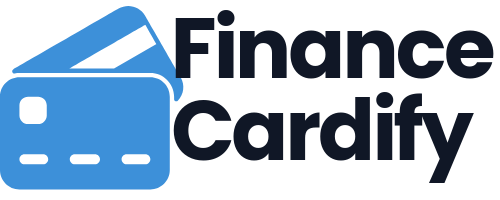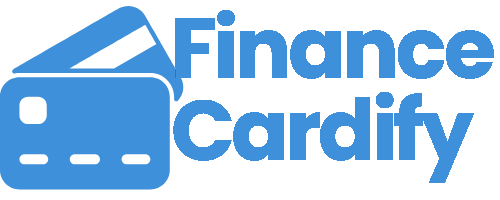In the world of personal finance, few concepts are as ubiquitous yet often misunderstood as loans. From purchasing a home or car to funding an education or managing unexpected expenses, loans serve as a vital financial tool, providing access to capital when you need it most. However, stepping into the lending landscape without a clear understanding of the mechanics, types, and implications can lead to costly mistakes.
This detailed guide aims to demystify loans, empowering you with the knowledge to make informed, responsible borrowing decisions that support your financial well-being.
The Fundamentals: How Loans Work
At its core, a loan is simply an agreement in which a lender (a bank, credit union, or financial institution) gives a sum of money, known as the principal, to a borrower. In return, the borrower promises to repay the principal amount over a specified period, known as the loan term, along with an additional charge called interest.
Key Loan Components
Understanding the core components of any loan agreement is crucial before signing on the dotted line:
- Principal: The original amount of money borrowed.
- Interest Rate: The cost of borrowing the principal, expressed as a percentage of the principal. This is the lender’s profit.
- Annual Percentage Rate (APR): This is a broader measure of the cost of the loan, including the interest rate plus any additional fees, such as origination or closing costs. The APR is the best metric for comparing the true cost of different loans.
- Loan Term: The length of time you have to repay the loan, typically expressed in months or years. A longer term usually means lower monthly payments but results in paying more total interest over the life of the loan.
- Monthly Payment: The fixed amount you pay back each month, which covers both a portion of the principal and the accrued interest. This process of gradual debt repayment is called amortization.
Secured vs. Unsecured Loans
One of the most fundamental distinctions in lending is the presence or absence of collateral.
1. Secured Loans
A secured loan requires the borrower to pledge an asset (collateral) to guarantee the repayment of the loan.
- How it Works: The collateral serves as the lender’s security. If the borrower defaults on the loan payments, the lender has the legal right to seize and sell the collateral to recover the outstanding debt.
- Common Examples: Mortgages (the home is the collateral) and Auto Loans (the vehicle is the collateral).
- Pros: Generally offer lower interest rates and larger loan amounts because the lender’s risk is reduced.
- Cons: You risk losing your valuable asset if you fail to repay the debt.
2. Unsecured Loans
An unsecured loan is a loan that is not backed by any collateral.
- How it Works: The lender relies solely on the borrower’s creditworthiness (credit score and financial history) and ability to repay.
- Common Examples: Personal Loans, Credit Cards, and most Student Loans.
- Pros: No asset is at risk. The application and funding process is often faster and simpler.
- Cons: Typically carry higher interest rates due to the increased risk for the lender. Approval often requires a good to excellent credit score.
Major Types of Loans
Beyond the secured/unsecured distinction, loans are categorized by their purpose:
| Loan Type | Primary Purpose | Secured/Unsecured | Key Consideration |
| Personal Loans | Debt consolidation, home improvements, unexpected expenses. | Unsecured (most common) or Secured. | Fixed interest rate and fixed monthly payment make budgeting predictable. |
| Mortgages | Purchasing real estate (a house, condo, etc.). | Secured (by the property). | The term is usually long (15 or 30 years). Your choice between a fixed-rate or adjustable-rate is critical. |
| Auto Loans | Purchasing a new or used vehicle. | Secured (by the vehicle). | The loan’s value is often based on the car’s market value. |
| Student Loans | Funding post-secondary education. | Unsecured. | May offer unique benefits like grace periods and income-driven repayment plans, particularly Federal Student Loans. |
| Home Equity Loans/HELOCs | Borrowing against the equity you’ve built in your home. | Secured (by the property). | You risk your home if you default. A HELOC is a revolving line of credit, while a Home Equity Loan is a lump sum. |
The Road to Approval: What Lenders Look For
Before extending a loan, lenders evaluate a borrower’s creditworthiness. They typically focus on five main factors, often summarized as the “Five Cs of Credit,” though the first two are the most prominent in consumer lending:
1. Credit Score & History
Your credit score (e.g., FICO or VantageScore) is a three-digit number that summarizes your financial reliability. A high score (typically 700+) demonstrates a history of responsible debt management, which often qualifies you for the best interest rates. Lenders review your credit report for:
- Payment History (The biggest factor): Whether you pay your debts on time.
- Amounts Owed: Your current debt burden relative to your credit limits (Credit Utilization).
- Length of Credit History: How long you’ve had credit accounts.
2. Capacity (Debt-to-Income Ratio)
Lenders assess your ability to repay the loan based on your income and current debt load. The Debt-to-Income (DTI) ratio is key. It’s calculated by dividing your total monthly debt payments by your gross monthly income. A lower DTI indicates you have sufficient disposable income to handle the new loan payment. Many lenders prefer a DTI of 43% or lower.
Smart Repayment Strategies: Taking Control
Receiving the funds is only the first step; effective repayment is where you save money and build a stronger financial future.
1. The Power of Extra Payments
Any extra money you pay towards the principal of your loan reduces the balance on which interest is calculated immediately. Even small, consistent extra payments can dramatically shorten your loan term and save you hundreds or thousands in interest. Always ensure extra payments are applied directly to the principal.
2. Prioritize High-Interest Debt
If you have multiple loans (or debts), focus your extra payments using one of two popular methods:
- Debt Avalanche Method: Prioritize paying off the debt with the highest interest rate first, while making minimum payments on the others. This mathematically saves you the most money.
- Debt Snowball Method: Prioritize paying off the debt with the smallest balance first, then move to the next smallest. This psychological strategy provides quick wins to maintain motivation.
3. Consider Refinancing or Consolidation
- Refinancing: Taking out a new loan to pay off an old one, usually to secure a lower interest rate or a shorter term. This is common for mortgages and student loans when interest rates drop or your credit score improves.
- Debt Consolidation: Combining multiple smaller debts (like credit card balances or personal loans) into a single, larger loan, often at a lower interest rate, to simplify payments and reduce your overall monthly expense.
A Final Word of Caution
Loans are tools, and like any tool, they must be used wisely. Never borrow more than you realistically need, and critically, never take out a loan you aren’t absolutely sure you can afford to repay. Failure to meet your obligations can lead to significant financial distress, damage your credit score, and, in the case of secured loans, result in the loss of your assets.
By understanding the terms, choosing the right type of loan for your needs, and executing a smart repayment plan, you can successfully leverage loans to achieve your most ambitious financial goals.





